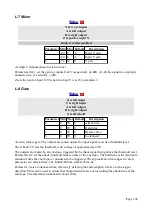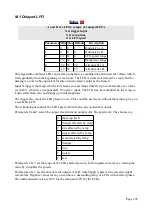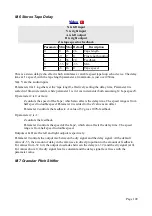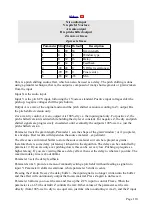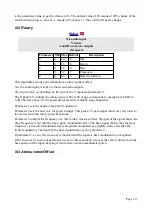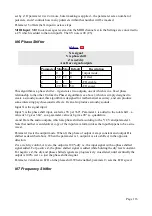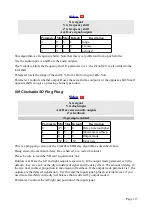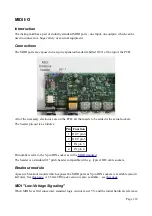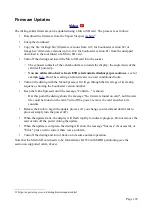
X is audio input
Y is pitch 1V/octave
A is mix output
B is pitch shifted output
Z is mix or freeze
Z press is freeze
Parameter Min Max Default
Description
0
0
99
50
Grain length.
1
0
3
0
Window type.
2
0
32
16
Delay.
3
0
64
0
Feedback.
4
-48 48
0
Y Offset (semitones).
5
-99 99
0
Fine (cents).
6
-65 64
-65
Mix.
This is a pitch shifting audio effect, which can also be used as a delay. The pitch shifting is done
using a granular technique, that is, the output is composed of many short segments or 'grains' taken
from the input.
Input X is the audio input.
Input Y is the pitch CV input, following the 1V/octave standard. Positive input voltages shift the
pitch up; negative voltages shift the pitch down.
Output A is a mix of the original audio and the pitch shifted version (according to Z); output B is
the pitch shifted version only.
Z is a wet/dry control. At zero, output A is 100% dry i.e. the input signal only. For positive Z, the
pitch shifted version is added while holding the dry level constant. For negative Z, the dry and pitch
shifted signals are progressively crossfaded, until eventually the output is 100% wet i.e. just the
pitch shifted version.
Parameter 0 sets the grain length. Parameter 1 sets the shape of the grain 'window', or if you prefer,
its envelope. Best results will depend on the source material – experiment.
The effect uses an internal buffer to store the source material so it can be replayed as grains –
therefore there is some delay (or latency) inherent in the algorithm. The delay can be controlled by
parameter 2. If you are only ever pitching down, this can be set very low. Pitching up requires a
higher latency. If you are viewing this as a delay effect, then set the delay to whatever you like. The
maximum delay time is about 400ms.
Parameter 3 sets the delay feedback.
Parameters 4 & 5 provide a means of manually setting a pitch shift without feeding a signal into
input Y. Parameter 4 shifts in semitones, while parameter 5 shifts in cents.
Pressing the Z knob 'freezes' the delay buffer – the input signal is no longer written into the buffer
and the effect will continuously output the frozen material. Press Z again to unfreeze it.
Parameter 6 allows you to set the mix and free up the Z CV input to control Freeze. When the
parameter is at -65 (the default) Z controls the mix. Other values of the parameter set the mix
directly (from 100% wet to dry to an equal mix, just like when controlling it via Z), and the Z input
Page 110









